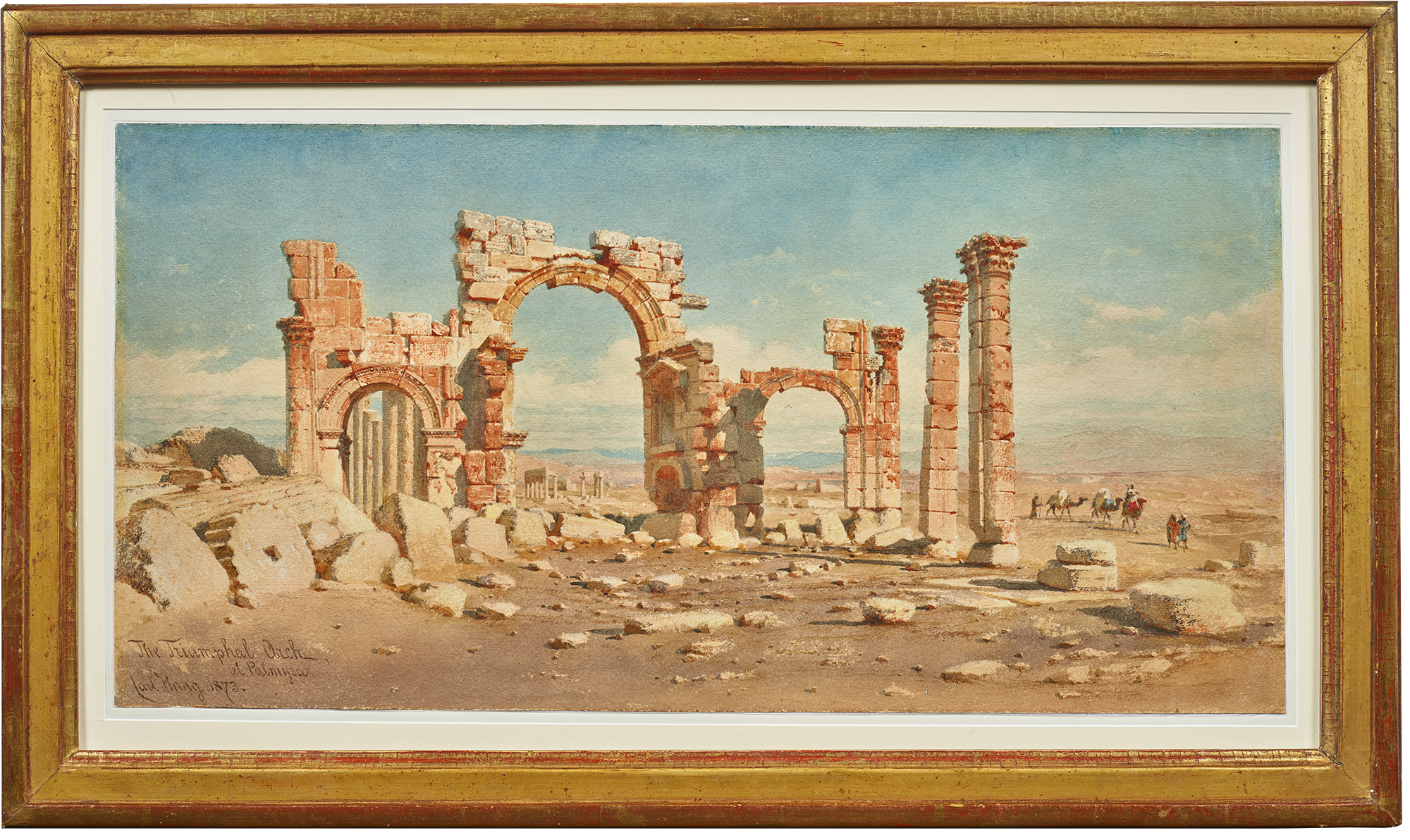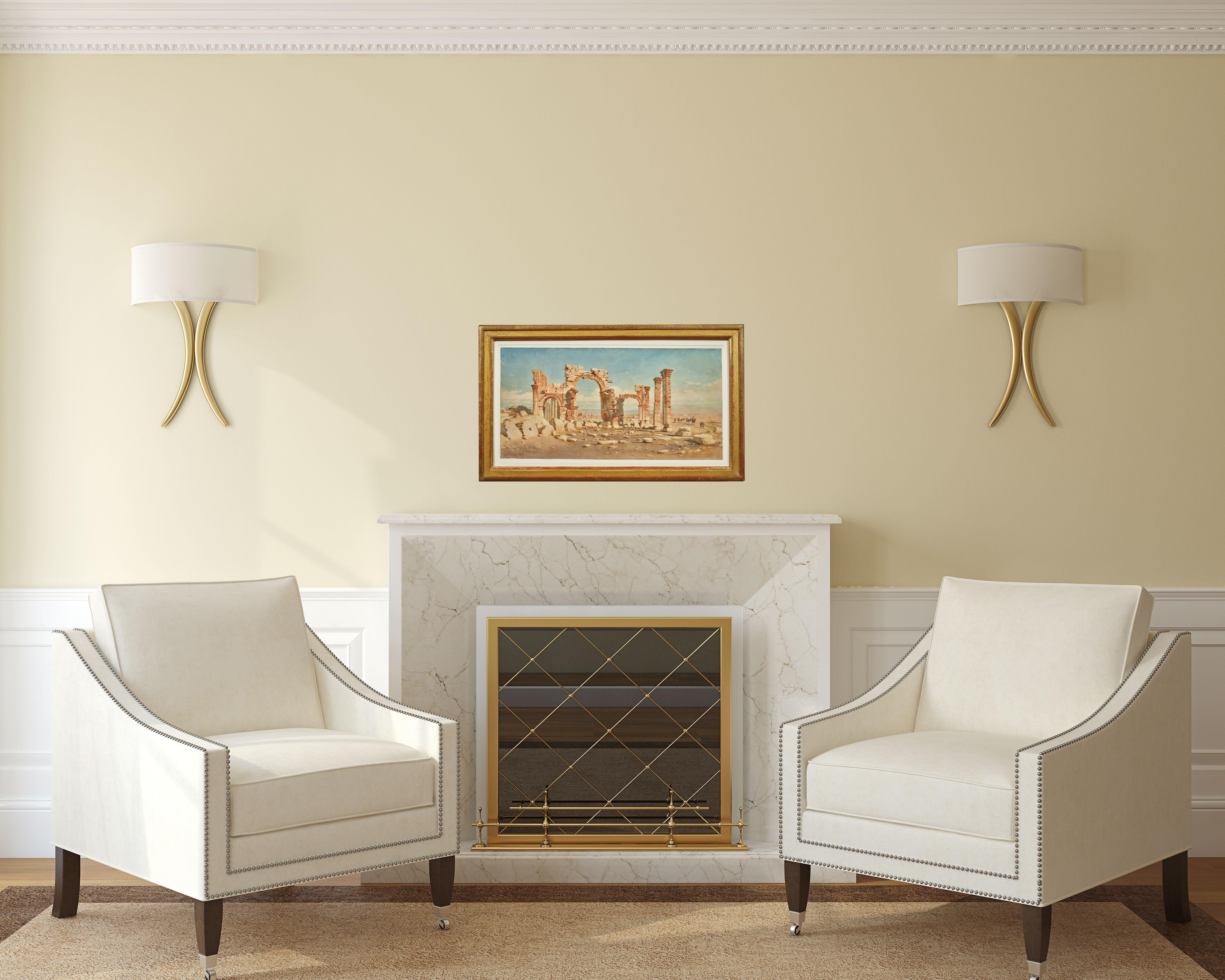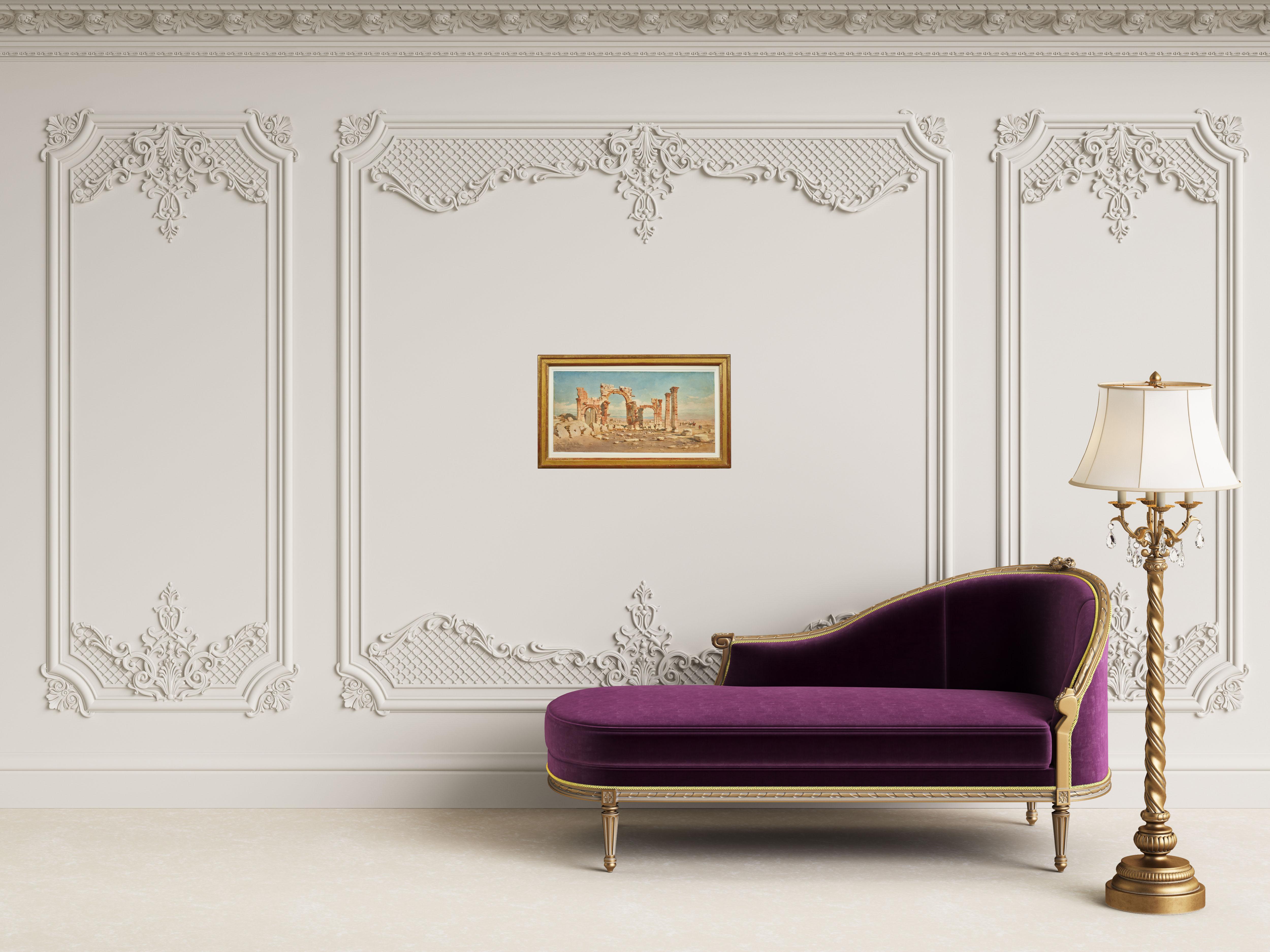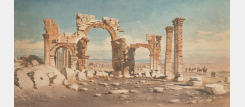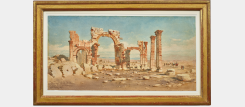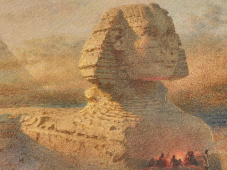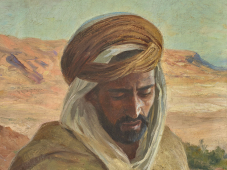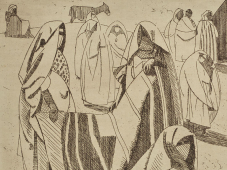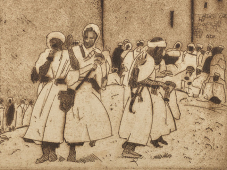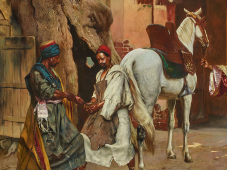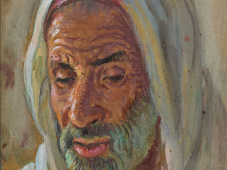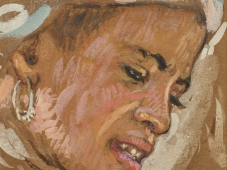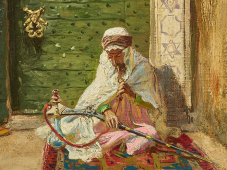The Triumphal Arch at Palmyra
Description of the artwork
Thanks to Wood and Dawkins, the site of Palmyra was rediscovered by the West in the mid-18th century. The ruins, whose isolated location in the middle of the Syrian Desert, remained accessible only to the most intrepid and courageous travelers, who had to brave the harsh desert before they could be revealed to them.
Among them, Carl Haag traveled to Palmyra during a 15-month journey that took him to Egypt, Palestine, Syria, and Lebanon between 1858 and 1860. During this journey, the painter made numerous sketches of this ancient site, which housed a prosperous city between the 1st and 3rd centuries AD thanks to its location on one of the main trade routes between Rome and the East.
In his watercolor, Haag focuses on the magnificent Triumphal Arch, the gateway to the colonnaded street, which dates back to the 2nd century.
Origin
Former Rodney Searight collection
Literature
"The Orient observed. Images of the Middle East from the Searight collection" reproduit p.42-43
75008 Paris, France
Saturdays from 2 to 7 p.m.




